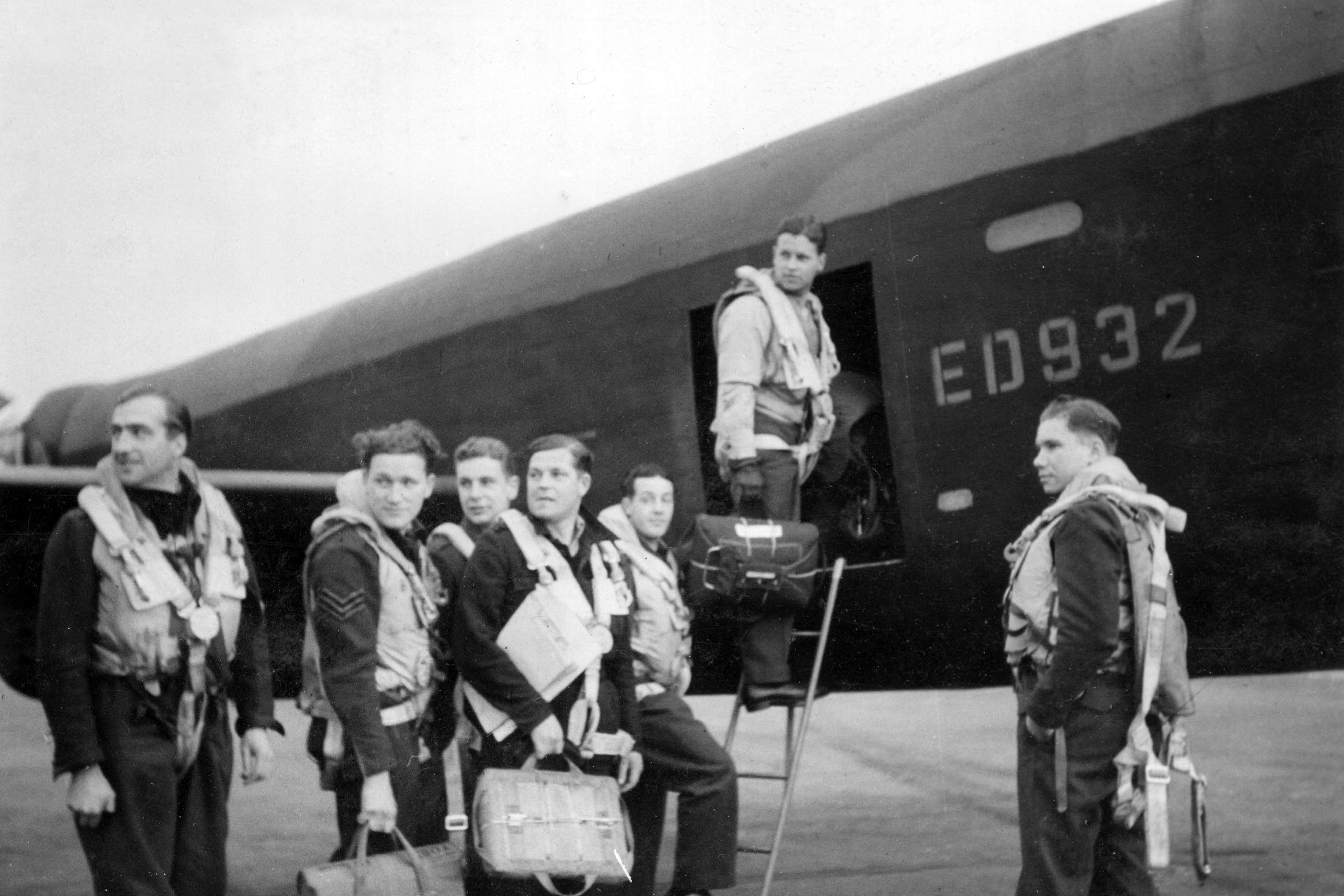RAF Scampton Dambusters dog grave plans to be discussed at extraordinary meeting
West Lindsey District Council’s planning committee has been advised to reject an application to exhume the dog’s body.

An extraordinary meeting is to be held over proposals to exhume the body of the dog buried at the former home of the Dambusters due to concerns connected to the site’s use as a migrant camp.
The black Labrador, whose name is a racial slur, was owned by Wing Commander Guy Gibson, who led the RAF 617 Squadron’s famous Dambusters raid from RAF Scampton, in Lincolnshire, in May 1943.
The dog died on the eve of the raid and, as per Wg Cdr Gibson’s instructions, was buried on the grounds of the Grade II-listed Hangar 2 at the base, which earlier this year was earmarked for use as accommodation for asylum seekers.
Ideally the grave would remain at Scampton as part of the important story in the location hugely significant parts of the RAF, and indeed the nation’s, story but the future is now too uncertain to recommend this course of action
The application by RAF Heritage to West Lindsey District Council, submitted in May, asks for Listed Building Consent which would allow the group to remove the grave and the memorial to the dog and move it to RAF Marham in Norfolk.
In a heritage statement, Wg Cdr Erica Ferguson, of RAF Heritage, said: “As there is now no guarantee of a sustainable heritage-focused future for Scampton with careful management and interpretation of the story of the raid and Wing Commander Gibson’s dog, we believe the grave site is at risk and carries significant reputational risk given the racial slur now associated with the dog’s name.
“We feel it would be better to return the marker and any remains to 617 Squadron.
“The dog was one of the Squadron’s mascots and would take care of the story for the foreseeable future.
“Ideally the grave would remain at Scampton as part of the important story in the location hugely significant parts of the RAF, and indeed the nation’s, story but the future is now too uncertain to recommend this course of action.
“Recent video footage of a group known as ‘Abandoned’ who broke onto the base and accessed the Officers’ Mess increases concern over the future of the heritage fabric of the site.”
While the grave itself is not listed, the council has deemed it to be a curtilage-listed structure to the hangars at the base, meaning consent is needed for any work to be carried out.
As of Tuesday, 200 comments have been made in relation to the application, with at least 170 objecting to the proposal.
The public comments come from residents living in multiple areas of Lincolnshire but also as far afield as North Yorkshire, London and Scotland.
The council’s planning committee has been recommended to refuse at the meeting taking place on Wednesday by several bodies.
They include the council’s planning and conservation officers, the Scampton Heritage Group and Historic England.
Historic England said: “The story of Guy Gibson’s dog is part of the wider story of Bomber Command, Wing Commander Guy Gibson and the Dambusters Raid, all of which are centred at Scampton.
“The dog’s grave is deliberately placed at Scampton in close association with Hangar 2 and Guy Gibson’s office.
“The loss of Guy Gibson’s dog’s grave would harm the significance of Number 2 hangar, a building listed at Grade II.
“The dog’s role as a mascot, its life and death and deliberate burial adjacent to No 2 hangar, is part of the history and significance of the listed hangars.
“Furthermore, the loss of the dog and its grave reduces the heritage significance of Scampton more widely as a place.”
The council’s planning officer said in their comment that there were “no identified public benefits that would outweigh the level of substantial harm” caused by the proposal.
The plans to use the base as a site for up to 2,000 asylum seekers was announced in March by the Minister for Immigration, Robert Jenrick, a decision the council described as “irrational”.
The scheme has been heavily criticised by the MP for the area, Sir Edward Leigh, with a £300 million regeneration plan for the site having to be put on hold.
At a High Court hearing in May, a judge ruled against the council after lawyers asked for an interim injunction preventing the Home Office from moving “materials, equipment or people” onto the land, pending a final ruling.
Bookmark popover
Removed from bookmarks